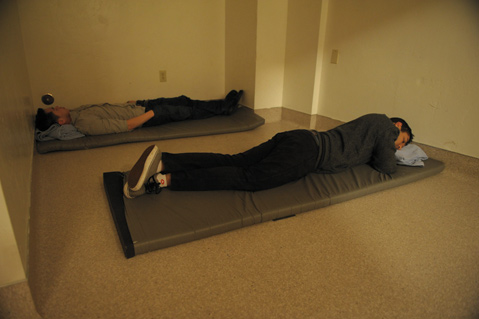IV Sobering Center ‘Stuck in the Mud’
While Hundreds are Transported to County Jail Every Year

At a recent meeting at Isla Vista Foot Patrol, the room buzzed with surprise when John Doyel, Santa Barbara County drug and alcohol guru, announced he was pulling support for the proposed sobering center, in the works for years. Doyel may have spoken too soon. He has a meeting this week to discuss the project’s future with Supervisor Doreen Farr, who represents Isla Vista. “[It’s] stuck in the mud,” he said.
Two years ago, plans for an I.V. sobering center, formally known as the Safe Center, revived after being dormant for years. Simply put, its purpose is to offer a place for intoxicated young people to sober up — instead of the County Jail. Every weekend, Isla Vista cops arrest scores of drunken people, fearing they are a risk to themselves or others. They are taken to jail, where they spend the evening and could face criminal charges. (That said, District Attorney Joyce Dudley does not often file such cases, which are difficult to prove based on the way the law is written, she said.)
Now optimism about the center’s future depends on to whom you speak. “It’s basically dead in the water,” attorney Robin Unander, who has been closely involved, said in an email. If the county’s Behavioral Wellness department — where Doyel is a director — were no longer the lead agency, she doubted anyone from the university would step in to take the reins.
“Sometimes it feels like it’s two steps forward and one step backward,” said Supervisor Farr, who is retiring at the end of her term this year. Farr heard about the project during her first campaign for supervisor in 2008. “We’re closer now than we’ve ever been.”
Most people support the concept in theory, but — like many things in Isla Vista — its progress has been slow. Logistical roadblocks have stalled it. For starters, its proposed location — the first floor of the I.V. clinic building — shares a parking lot with the clinic and a park, where children are present during the day. Its hours of operation were also at issue. Originally it was slated to be open Thursday afternoon to Sunday, around the clock. But concerns from other clinic tenants reduced its purposed schedule to be weekend overnight hours.
And the funding model remains amorphous. On two occasions — once in 2014 by the student body and once this year by the student senate — a student lock-in fee to improve safety in Isla Vista failed. The center would also be paid for by a $300 fee by patients, who would also be required to complete an alcohol and drug course. (Earlier this year, I.V. developer Ed St. George pledged to donate $50,000 to renovate the space.)
Though the UC Police Department had previously expressed concerns, Lt. Mark Signa said he was optimistic about the center’s future. “It’s not easy,” he said. “There are a lot of little things that need to be worked out.” Signa said he was not aware of similar centers near other UC campuses.
Debbie Fleming, UCSB’s associate vice chancellor for Student Affairs, said the plans stalled “not due to lack of support or interest on the part of those who were involved in the initial discussion” but rather funding challenges. She added, “If the community services district is supported in the upcoming election, and with full implementation this fall of UCIV, a public volunteer program, it’s possible the community will want to revisit the goals or the format of a sobering or safe center.”
The sobering center in the City of Santa Barbara — a model for this one — saves police officers considerable time that they would otherwise have spent transporting drunken subjects to County Jail, said police Sergeant Riley Harwood.
Last year in Isla Vista, there were 458 public intoxication arrests, which decreased since 2013, when there were 671. All arrestees were booked, some overnight. From 2011-2014, roughly 850 alcohol-related ambulance trips were made on Fridays and Saturdays from Isla Vista to Goleta Valley Cottage Hospital, a minimum $1,400 cost. Most of those people, however, would probably still be transported to the hospital for a medical evaluation rather than checked into a sobering center should one be established, said AMR Operations Director Dave Schierman.
Ultimately, Doyel was unsure if there is enough support — financially or philosophically — from all stakeholders to make it work, though he emphasized the center’s revolutionary nature. “It’s a huge project,” he said. “I don’t think anyone went into it with any illusions.”



